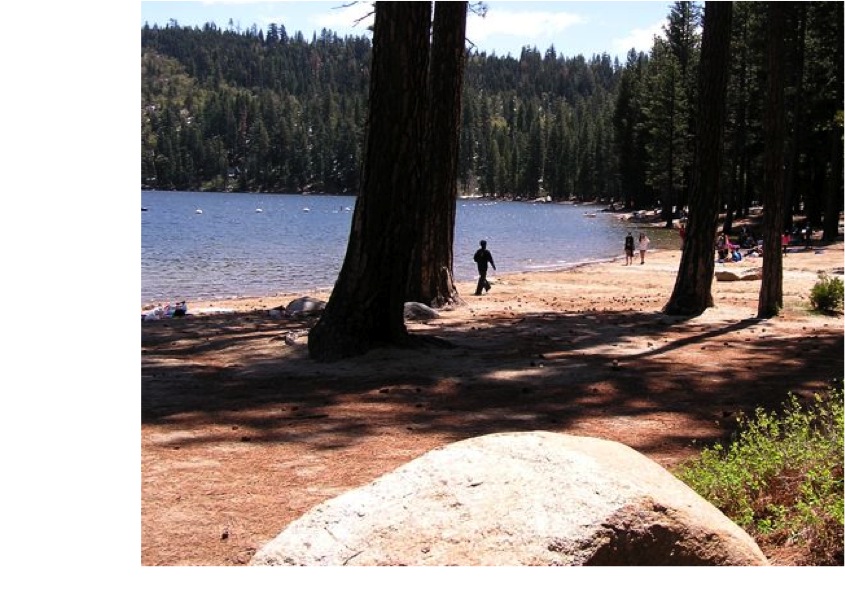For years the Tuolumne Utilities District (TUD) has rallied local politicians, business interests, and development advocates to join in demanding a lower “end of summer” lake level at Pinecrest Lake. The water held in Pinecrest Lake flows downstream to Lyons Reservoir, where a lengthy flume and ditch system diverts most of the water to serve TUD customers stretching across the core populated area of Tuolumne County. The Pacific Gas & Electric company (PG&E) actually owns and operates Pinecrest Reservoir and Lyons Reservoir. PG&E holds water rights to the water and has legal responsibility to manage the South Fork Stanislaus River and the two reservoirs consistent with federal requirements from the Federal Energy Regulatory Commission.
But TUD ends up with more or less water for customers based on whether Pinecrest Lake is managed for a low or moderate lake level at Labor Day – the end of the summer recreation season. CSERC has tried for years to negotiate a balanced middle ground Pinecrest Lake level that benefits 25,000 Pinecrest area visitors on summer weekends, but also entitles TUD to water when it is truly needed. In the midst of this year’s conditions that the State has designated as a “severe drought,” PG&E requested approval from the State Water Board for a far lower than normal lake level at Pinecrest. But surprising amounts of inflow from thunderstorms and spring run-off resulted in PG&E now predicting that a normal lake level will provide recreation benefits all the way through Labor Day. Thus, in a severe drought, water management and summer rainfall have actually led to more water in Pinecrest Lake than was expected. Thus, debating the lake level may not be needed when beneficial recreational levels can be met and downstream water demands by TUD can also be fully met.
In the midst of this year’s conditions that the State has designated as a “severe drought,” PG&E requested approval from the State Water Board for a far lower than normal lake level at Pinecrest. But surprising amounts of inflow from thunderstorms and spring run-off resulted in PG&E now predicting that a normal lake level will provide recreation benefits all the way through Labor Day. Thus, in a severe drought, water management and summer rainfall have actually led to more water in Pinecrest Lake than was expected. Thus, debating the lake level may not be needed when beneficial recreational levels can be met and downstream water demands by TUD can also be fully met.
Strongly held views about water in the local region go far beyond Pinecrest Lake or the HHWP project on the Tuolumne River. To move past polarized debates, a Community Water Council process was sponsored by TUD in the spring to seek general consensus about how to meet the region’s water supply needs.
The top five solutions broadly endorsed by TUD, County representatives, business interests, CSERC, and others on the Water Council panel included reducing water waste in the TUD ditch sytem, eliminating major water losses in deteriorating pipes, improving the reliability of the vulnerable wooden flume system, creating non-controversial off-stream storage, and working to increase capacity and efficiency of existing reservoirs by removing silt, etc. such as is being done at Phoenix Lake. Now the question is whether TUD directors and Tuolumne County supervisors will focus on these areas of overlapping agreement or instead go to back to beating the drum for highly controversial and extremely expensive new dams and diversion projects. CSERC believes that reducing waste of the water (that TUD already has) makes the most sense economically as well as for the environment, while new off-stream storage projects might also provide a water supply benefit.

